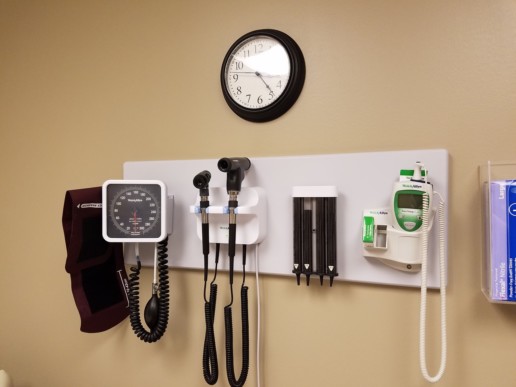Oct. 15 Deadline Nears for Medicare Part D Coverage Notices
Are you prepared for the Medicare Part D coverage notice deadline? Plan sponsors that offer prescription drug coverage must provide notices to Medicare-eligible individuals before October 15. Read on to learn more.
Plan sponsors that offer prescription drug coverage must provide notices of "creditable" or "non-creditable" coverage to Medicare-eligible individuals before each year's Medicare Part D annual enrollment period by Oct. 15.
Prescription drug coverage is creditable when it is at least actuarially equivalent to Medicare's standard Part D coverage and non-creditable when it does not provide, on average, as much coverage as Medicare's standard Part D plan.
The notice obligation is not limited to retirees and their dependents covered by the employers' plan, but also includes Medicare-eligible active employees and their dependents and Medicare-eligible COBRA participants and their dependents.
Background
The Medicare Prescription Drug, Improvement, and Modernization Act of 2003 requires group health plan sponsors that provide prescription drug coverage to disclose annually to individuals eligible for Medicare Part D whether the plan's coverage is creditable or non-creditable.
The Centers for Medicare & Medicaid Services (CMS) has provided a Creditable Coverage Simplified Determination method that plan sponsors can use to determine if a plan provides creditable coverage.
Disclosure of whether their prescription drug coverage is creditable allows individuals to make informed decisions about whether to remain in their current prescription drug plan or enroll in Medicare Part D during the Part D annual enrollment period.
Individuals who do not enroll in Medicare Part D during their initial enrollment period, and who subsequently go at least 63 consecutive days without creditable coverage (e.g., because they dropped their creditable coverage or have non-creditable coverage) generally will pay higher premiums if they enroll in a Medicare drug plan at a later date.
Who Must Receive the Notice?
The notice must be provided to all Medicare-eligible individuals who are covered under, or eligible for, the sponsor's prescription drug plan, regardless of whether the plan pays primary or secondary to Medicare. Thus, the notice obligation is not limited to retirees and their dependents but also includes Medicare-eligible active employees and their dependents and Medicare-eligible COBRA participants and their dependents.
Notice Requirements
The Medicare Part D annual enrollment period runs from Oct. 15 to Dec. 7. Each year, before the enrollment period begins (i.e., by Oct. 14), plan sponsors must notify Medicare-eligible individuals whether their prescription drug coverage is creditable or non-creditable. The Oct. 15 deadline applies to insured and self-funded plans, regardless of plan size, employer size or grandfathered status.
Part D eligible individuals must be given notices of the creditable or non-creditable status of their prescription drug coverage:
- Before an individual's initial enrollment period for Part D.
- Before the effective date of coverage for any Medicare-eligible individual who joins an employer plan.
- Whenever prescription drug coverage ends or creditable coverage status changes.
- Upon the individual's request.
According to CMS, the requirement to provide the notice prior to an individual's initial enrollment period will also be satisfied as long as the notice is provided to all plan participants each year before the beginning of the Medicare Part D annual enrollment period.
| An EGWP exception
Employers that provide prescription drug coverage through a Medicare Part D Employer Group Waiver Plan (EGWP) are not required to provide the creditable coverage notice to individuals eligible for the EGWP. |
The required notices may be provided in annual enrollment materials, separate mailings or electronically. Whether plan sponsors use the CMS model notices or other notices that meet prescribed standards, they must provide the required disclosures no later than Oct. 14, 2017.
Model notices that can be used to satisfy creditable/non-creditable coverage disclosure requirements are available in both English and Spanish on the CMS website.
Plan sponsors that choose not to use the model disclosure notices must provide notices that meet prescribed content standards. Notices of creditable/non-creditable coverage may be included in annual enrollment materials, sent in separate mailings or delivered electronically.
| What if no prescription drug coverage is offered?
Because the notice informs individuals whether their prescription drug coverage is creditable or non-creditable, no notice is required when prescription drug coverage is not offered. |
Plan sponsors may provide electronic notice to plan participants who have regular work-related computer access to the sponsor's electronic information system. However, plan sponsors that use this disclosure method must inform participants that they are responsible for providing notices to any Medicare-eligible dependents covered under the group health plan.
Electronic notice may also be provided to employees who do not have regular work-related computer access to the plan sponsor's electronic information system and to retirees or COBRA qualified beneficiaries, but only with a valid email address and their prior consent. Before individuals can effectively consent, they must be informed of the right to receive a paper copy, how to withdraw consent, how to update address information, and any hardware/software requirements to access and save the disclosure. In addition to emailing the notice to the individual, the sponsor must also post the notice (if not personalized) on its website.
| Don't forget the disclosure to CMS
Plan sponsors that provide prescription drug coverage to Medicare-eligible individuals must also disclose to CMS annually whether the coverage is creditable or non-creditable. This disclosure must be made no more than 60 days after the beginning of each plan year—generally, by March 1. The CMS disclosure obligation applies to all plan sponsors that provide prescription drug coverage, even those that do not offer prescription drug coverage to retirees. |
SOURCE: Chan, K.; Stover, R. (10 September 2018) "Oct. 15 Deadline Nears for Medicare Part D Coverage Notices" (Web Blog Post). Retrieved from https://www.shrm.org/resourcesandtools/hr-topics/benefits/pages/medicare-d-notice-deadline.aspx/
ACA: 4 things employers should focus on this fall
Yes, employers still need to worry about the Affordable Care Act and its many rules and regulations. Read this blog post for more information.
During the coming months, employers may have questions about whether they still need to worry about the Affordable Care Act (ACA). The answer is yes; the ACA is alive and well, despite renewed legal challenges and the elimination of the individual mandate beginning next year.
While the Tax Cuts and Jobs Act reduced the tax penalty for individuals who don’t have health coverage to $0, effective for 2019, employers are still subject to penalties for failing to comply with certain ACA rules. For example, the IRS is currently enforcing “employer shared responsibility payments” (ESRP) penalties against large employers who fail to meet the ACA requirements to offer qualifying health coverage to their full-time employees. For this purpose, large employers are those with 50 or more full-time or full-time equivalent employees. Here are four things about the ACA that employers should focus on now to avoid significant financial liabilities.
1. The IRS is currently assessing penalties using 226-J letters
In 2017, the IRS began assessing ESRP penalties against large employers that failed to offer qualifying health coverage to at least 95 percent of their full-time employees. An ESRP penalty assessment comes in the form of a 226-J letter, which explains that the employer may be liable for the penalty, based on information obtained by the IRS from Forms 1095-C filed by the employer for that coverage year, and tax returns filed by the employer’s employees. The employer has only 30 days to respond to the 226-J letter, using IRS Form 14764, which is enclosed with the 226-J letter. The employer must complete and return IRS Form 14765 to challenge any part of the assessment.
The short timeframe for responding to a 226-J letter means that staff who are likely to be the first to receive communications from the IRS should have a plan in place to react quickly. Training for staff should include information about who to notify and what documentation to keep readily available to support an appeal. Not responding to the IRS 226-J letter will result in a final assessment of the proposed penalty. These penalties can be significant. In the worst case, an employer with inadequate health coverage could pay for the cost of the coverage, as well as penalties of $2,000/year (as indexed) for every full time employee (less 30), even those who received health coverage from the employer.
Depending on the employer’s response to the initial assessment, the IRS will then send the employer one of four types of 227 acknowledgment letters. If the employer disputes the penalty, the IRS could accept the employer’s explanation and reduce the penalty to $0 (a 227-K letter). But if the IRS rejects any part of the employer’s response, the employer will receive either a 227-L letter, with a lower penalty amount, or a 227-M letter, a notice that the amount of the initial assessment hasn’t changed. These letters will explain steps the employer has to take to continue disputing the assessment, including applicable deadlines. The next phase of the appeal might include requesting a telephone conference or meeting with an IRS supervisor, or requesting a hearing with the IRS Office of Appeals.
2. ACA reporting requirements and penalties still apply
Along with the ESRP penalties, the Form 1094-C and 1095-C reporting requirements still apply to large employers. The IRS uses information on Forms 1095-C in applying the ESRP rules and deciding whether to assess penalties against the reporting employer. Large employers must file Forms 1095-C every year with the IRS and send them to full-time employees in order to document compliance with the ACA requirement to offer qualified, affordable coverage to at least 95 percent of full-time employees. Technically, the forms are due to employees by January 31, and to the IRS by March 31, each year, to report compliance for the prior year. In the past, the IRS has extended the deadline for providing the forms to employees, but not the deadline for filing with the IRS.
Penalties can apply if an employer fails to file with the IRS or provide the forms to employees, and the penalty amount can be doubled if the IRS determines that the employer intentionally disregarded the filing requirement. These penalties can apply if an employer fails to file or provide the forms at all, files and provides the forms late, or if the forms are timely filed and provided, but are incorrect or incomplete.
In some instances, the IRS has assessed ESRP penalties based on Form 1095-C reporting errors. So, in addition to the reporting-related penalties, inaccurate information on Forms 1095-C can lead to erroneous ESRP assessments that the employer will then need to refute, using the IRS forms and procedures described above.
Employers should carefully monitor their ACA filings and reports, and consider correcting prior forms if errors are discovered. Employers should also continue tracking offers of coverage made for each month of 2018, to prepare for compliance with the Form 1095-C reporting requirement early in 2019.
3. “Summary of Benefits and Coverage” disclosure forms are still required
The ACA added a new disclosure requirement for group health plans, called a “Summary of Benefits and Coverage” or “SBC,” that’s intended to help employees make an “apples to apples” comparison of different benefit plan features, such as deductibles, out-of-pocket maximums, and copayments for various benefits and services. This requirement still applies, and SBCs must be provided during open enrollment, upon an employee’s initial eligibility for coverage under the plan, and in response to a request from an employee. The template SBC form and instructions for completing it were updated for coverage periods starting after April 1, 2017. For 2018, a penalty of $1,128 per participant can apply to the failure to provide an SBC as required.
4. The “Cadillac Tax” has not been repealed
The ACA’s so-called Cadillac tax — an annual excise tax on high-cost health coverage — was initially scheduled to take effect in 2018. The Cadillac tax has been repeatedly delayed, and the federal budget bill passed in January delayed it again through December 31, 2021. Despite the repeated delays, the Cadillac tax has not been repealed and is currently scheduled to apply to health coverage offered on or after January 1, 2022. This might be an issue to consider for employers who are negotiating collective bargaining agreements in 2018 that include terms for health benefits extending beyond 2021.
While uncertainty continues to surround the ACA, employers should remain aware of continuing compliance requirements to avoid the potentially significant penalties that remain in effect under the ACA.
Boyette, J; Masson, L (21 August 2018) "ACA: 4 things employers should focus on this fall" (Web Blog Post). Retrieved from https://www.benefitspro.com/2018/08/21/aca-4-things-employers-should-focus-on-this-fall/
Avoiding red flags: How to lower your plan's audit risk
Any size plan can be selected for an IRS or DOL audit. Businesses should learn how to avoid the red flags to help lower their plan’s audit risk. Read this blog post to learn more.
Are only the largest retirement plans audited? The truth is that plans of any size can be audited by the IRS and the DOL. Your plan could be selected for a random audit, or as a result of IRS datasets that target certain types of plans. However, lots of audits are triggered by specific events. Learning to avoid the red flags can help reduce your risk and increase the odds that you will survive any audit for which you are selected without major problems.
Your Form 5500 can be audit bait
Bad answers to Form 5500 can attract the Labor Department’s attention and serve as audit bait. The best way to make sure that your Form 5500 filing doesn’t lead to an audit is to check it carefully — with outside assistance if necessary — to make sure that the compliance questions are answered correctly.
For example, one compliance question asks whether the plan is protected by an ERISA bond and if so, the amount of coverage. Never answer “no” to this question. If for some reason you didn’t have a bond before, get one now. It is even possible to obtain retroactive coverage.
A coverage amount that is too low is also a red flag. In most cases, the bond must be for at least 10% of plan assets at the beginning of the year, although plans with certain types of investments must have higher coverage. Since assets at prior year end and at the beginning of the year are also shown on the 5500, showing an amount lower than 10% of those assets will invite the DOL to follow up.
The DOL will also look at the investment and financial information shown in the asset report. If your plan has many alternative investments such as hedge funds, has invested in other hard-to-value investments, or if you have large amounts of un-invested cash, you may also be inviting a follow up by the DOL. If your asset values as of the end of the prior year do not match your opening year balance for the succeeding year, you are also inviting unwanted inquiries.
Other answers that may get you targeted for further investigation are: if you indicate that you have late deposits of employee contributions or that you have not made required minimum distributions to former employees who are 70.5 years old. Note that this question does not need to be answered “Yes” if reasonable efforts have been made to find the participants but they still can’t be located.
Don’t ignore employee claims and complaints
Many plan sponsors don’t realize that employee complaints to the IRS and DOL often lead to audits. Make sure that employee questions and complaints receive a response, and if a formal claim for benefits is filed, make sure to follow the ERISA regulations on benefit claims and appeals. It is a good idea to run any denials past your ERISA attorney to make sure they are consistent with the written plan terms and clearly explain the participant’s appeal rights and the reason for the denial.
Be prepared
If your plan is selected for IRS or DOL audit, expect to be asked to provide executed plan documents, participant notices and fiduciary policies, such as your Investment Policy Statement. Keep these in a file to avoid a last-minute scramble to satisfy the auditor’s requests. You should also be prepared to show that you are making diligent efforts to find missing participants, deal with defaulted loans and review plan fees, which are current hot issues for auditors.
To be even better prepared, you can do a self-audit to identify problems that need correction before the IRS or DOL do.
SOURCE: Buckmann, C (29 June 2018) "Avoiding red flags: How to lower your plan's audit risk" (Web Blog Post). Retrieved from: https://www.benefitnews.com/opinion/irs-dol-audit-red-flags-and-avoiding-plan-risks
OSHA Proposes Change to Electronic Record-Keeping Rule
On July 30, OSHA submitted a Notice of Proposed Rulemaking that would eliminate the requirement for worksites with 250 or more employees to electronically submit certain data. Continue reading to learn more.
Worksites with 250 or more employees would not be required to electronically submit certain data to the Occupational Safety and Health Administration (OSHA) under a proposal to roll back an Obama-era rule.
The Improve Tracking of Workplace Injuries and Illnesses rule requires employers that are covered by OSHA's record-keeping regulations to electronically submit certain reports to the federal government. Certain establishments with 20-249 employees are required to submit only OSHA Form 300A each year—300A is a summary of workplace injuries and illnesses that many employers are required to post in the workplace from Feb. 1 until April 30 of each year.
In addition to Form 300A, larger establishments (those with 250 or more employees) were supposed to begin submitting data from Form 300 (the injury and illness log) and Form 301 (incident reports for each injury or illness) in July. However, in May, OSHA announced that it would not be accepting that information in light of anticipated changes to the rule.
As expected, on July 30, OSHA issued a Notice of Proposed Rulemaking (NPRM) to eliminate the requirement for large establishments to electronically submit information from Forms 300 and 301.
"OSHA has provisionally determined that electronic submission of Forms 300 and 301 adds uncertain enforcement benefits, while significantly increasing the risk to worker privacy, considering that those forms, if collected by OSHA, could be found disclosable" under the Freedom of Information Act, the agency said.
The electronic record-keeping rule has faced considerable opposition from the business community, in part because some of the data submitted will be made available to the public.
The proposed rule would also require employers to submit their employer identification numbers (EINs) when e-filing Form 300A. "Collecting EINs would increase the likelihood that the Bureau of Labor Statistics would be able to match data collected by OSHA under the electronic reporting requirements to data collected by BLS for the Survey of Occupational Injury and Illness," the agency said.
Anti-Retaliation Rules Remain
OSHA's electronic record-keeping rule also contains controversial anti-retaliation provisions. These provisions, which went into effect in December 2016, give OSHA broad discretion to cite employers for having policies or practices that could discourage employees from reporting workplace injuries and illnesses. For example, the provisions place limitations on safety incentive programs and drug-testing policies. OSHA has said that employers should limit post-accident drug tests to situations where drug use likely contributed to the incident and for which a drug test can accurately show impairment caused by drug use.
Prior to the new rules, many employers administered post-accident drug tests to all workers who were involved in an incident. The anti-retaliation provisions create another layer of ambiguity for employers, because they have to justify why they tested one person and not another, which may lead to race, gender and other discrimination claims, said Mark Kittaka, an attorney with Barnes & Thornburg in Fort Wayne, Ind., and Columbus, Ohio.
OSHA has not announced any plans to revise the electronic record-keeping rule any further. Many employer-side stakeholders were disappointed that OSHA made no effort to revise the anti-retaliation provisions, said John Martin, an attorney with Ogletree Deakins in Washington, D.C.
There are still undecided lawsuits in federal courts that challenged these provisions back when they were first issued but have been put on hold while revisions were pending, Martin noted. OSHA's proposed revision clearly did not resolve all of the challengers' concerns, so they are now deciding whether to ask the courts to resume litigation, he said.
What Now?
Employers should keep in mind that OSHA's electronic record-keeping rule refers to "establishment" size, not overall employer size, Kittaka said. An establishment is a single physical location where business is conducted or where services or industrial operations are performed, according to OSHA.
Large employers still need to electronically submit 300A summaries for each work establishment—office, plant, facility, yard, etc.—with 250 or more employees, Martin said. If they have work establishments with 20-249 employees and they are covered by OSHA's high-hazard establishment list, then they must also submit 300A summaries for those smaller establishments.
The proposed rule is open for public comment until Sept. 28. "OSHA made clear in the proposed rule that the agency was only seeking comments on the electronic submission and EIN" proposals, said Tressi Cordaro, an attorney with Jackson Lewis in Washington, D.C.
SOURCE: Nagele-Piazza, L (14 August 2018) "OSHA Proposes Change to Electronic Record-Keeping Rule" (Web Blog Post). Retrieved from https://www.shrm.org/resourcesandtools/legal-and-compliance/employment-law/pages/osha-proposes-change-to-electronic-record-keeping-rule.aspx/
Paid Family Leave claims processing tips
New York is setting a trend with new Paid Family Leave policy. New law could trigger states to follow their lead in the near future.
While most of us realize that change is a part of life, few of us can afford to sacrifice our paycheck when it happens.
To help ensure that New Yorkers do not find themselves in this situation, the state signed into law the nation’s strongest and most comprehensive Paid Family Leave (PFL) policy. Effective Jan. 1, 2018, the law provides residents with job-protected, paid leave to bond with a newborn, care for a loved one with a serious illness, or tend to family matters when a loved one is called to active military service.
The new law encompasses numerous leave types, eligibilities and durations, so processing a PFL claim can be confusing. To unmuddy the waters, let’s dive into the who, when, how and what regarding PFL.
Who is eligible?
Added to a company’s Disability Benefits Law (DBL) policy as a rider, Paid Family Leave was created for private-sector organizations with at least one employee who works in New York State at least 30 days of the year. Public companies may opt to provide coverage as well, but it is not required.
To be eligible for PFL, applicants must be employed by a covered employer at the time they apply.
- Employees with a regular work schedule of 20 or more hours per week are eligible after 26 consecutive weeks of employment. This includes sick or vacation time, but may not count other covered leaves.
- Employees with a regular work schedule of fewer than 20 hours per week are eligible after 175 days worked, which do not need to be consecutive.
How it works
In 2018, both full- and part-time employees are eligible to take up to eight weeks of PFL and receive 50% of their average weekly wage (AWW). The weekly earnings under PFL are currently capped at $652.96, which is 50% of the New York State Average Weekly Wage (NYSAWW) of $1,305.92. (For details, visit www.ny.gov.)
New Yorkers stand to benefit even more in the years to come, as the state plans to increase PFL incrementally, reaching 12 weeks by 2021.
PFL benefits are funded through a small weekly payroll deduction. The deduction is a percentage of an employee’s weekly wage — up to the aforementioned cap.
To provide some perspective, the current payroll contribution is 0.126% of a New Yorker’s gross weekly earnings, capped at a total annual contribution of $85.56. For example, an employee earning $1,200 a week in 2018 would pay $1.51 per week. To calculate an employee’s weekly deduction, simply enter the required information at www.ny.gov/paid-family-leave-calculator.
A healthy dose of security
Not only will eligible applicants receive a portion of their wages while on leave, qualifying employees can rely on continued health insurance coverage while taking PFL. Employers are required by law to continue the existing health insurance benefits. If employees contribute to the cost of their health insurance, they are also required to continue paying their portion while on leave.
It is important to note that Paid Family Leave does notreplace disability benefits coverage. Disability benefits are meant to cover off-the-job personal illness or injury. PFL is designed to provide paid time off to care for family that need assistance.
In fact, some employees may be eligible for both PFL bonding and disability benefits for maternity at the same time, although they may not be taken simultaneously, according to the New York State Workers Compensation Board.
Leave categories
PFL is flexible and may occur in a variety of ways. The applicant has options when deciding how much time to take at any given time. While the law states that a 30 day leave notice is required, there are considerations for times when life surprises us.
There are four main PFL categories:
- Continuous leave: The employee takes the entire 8 weeks of PFL without interruption.
- Intermittent leave:The employee takes leave in increments as short as one day at a time.
- Foreseeable event:The leave begins following a planned event such as a birth, adoption, surgery or military ceremony.
- Non-foreseeable event:The leave is in response to an accident or an unexpected surgery.
PFL-worthy events
As mentioned earlier, an employee can request PFL for one of three reasons. The State of New York classifies these leaves as Bonding, Family Care and Military Exigency. Each type has its own eligibility terms and required documentation. If your company or agency does not have the required forms on hand, they are available at www.ny.gov. Employees requesting PFL are required to do so at least 30 days in advance, when possible, starting with Form PFL-1.
Bonding Leave— A parent may take PFL during the first 12 months following the birth, adoption or foster placement of a child. To start the application process, an employee will need to obtain the “Bond with a Newborn, Newly Adopted or Fostered Child” forms package.
From there, the employee would complete a “Request for Family Leave” (Form PFL-1) and submit it to his or her employer, who will complete the employer section and then return it to the employee. A PFL-1 is required for all three types of leave. Also required is the “Bonding Certification” (Form PFL-2). The employee must complete and submit both forms, along with any supporting documentation (e.g., birth certificate, adoption certificate, etc.), to the employer’s insurance carrier.
Family Care Leave— New Yorkers have the right to take time off to care for a loved one with a serious health condition. This individual could be a spouse or domestic partner, child or stepchild, as well as a parent, stepparent, parent-in-law, grandparent or grandchild.
After obtaining a “Care for a Family Member with Serious Health Condition” forms package, the employee must submit a completed PFL-1 to their employer, who will complete it and return it to the employee. Additionally, the employee’s family member (the care recipient), or their authorized representative, is required to complete a “Release of Personal Health Information Under the Paid Family Leave Law” (Form PFL-3). Upon completing the release, the individual will submit it to his or her health care provider.
The second form the employee is required to complete is the “Health Care Provider Certification” (Form PFL-4). Upon completion, this form will go to the employee’s health care provider for review, then to the care recipient and ultimately back to the employee. The employee must submit the PFL-4, along with his or her completed PFL-1, and PFL-3, to his or her employer’s insurance carrier.
Military Exigency Leave — If an employee’s spouse, domestic partner, child or parent is deployed abroad or has been notified of an impending deployment, the employee can take PFL to assist or support the military member and his or her family. Examples include making financial and/or legal arrangements on the military member’s behalf, attending military-related ceremonies for the deployed individual and tending to urgent childcare needs created by the family member’s deployment.
To begin the process, the employee must obtain the “Assist Families in Connection with a Military Deployment” forms package. Next, the employee will need to complete a PFL-1 and submit the form to his or her employer. The employee must then complete the “Military Qualifying Event” (Form PFL-5), attaching any supporting documentation (e.g., covered active duty orders, letter from the military unit confirming deployment, etc.). The employee will then submit his or her employer-approved PFL-1 and completed PFL-5 to the employer’s insurance carrier.
Employer obligations
For employers, when it comes to PFL claims, compliance is key. Here are a few important obligations:
- New York employers are required to complete and return a submitted PFL-1 within three business days of receiving it.
- If an employer provides health care, the employer must maintain coverage while the employee is out on leave.
- As mentioned earlier, employers must provide the same or a similar job upon the employee’s return from leave.
While honoring these obligations are the law, doing so can be challenging for business owners, especially in the case of an intermittent leave. This new coverage will ramp up over the next four years, rates and benefit details are subject to changes by the New York Department of Financial Services (NYDFS).
It is critical to stay in-the-know about this new and developing coverage. Employers can look to their local insurance professionals for help navigating the ins and outs of this groundbreaking law, starting with filling out an employee census to determine their related premiums.
SOURCE:
Maas J (31 May 2018). "Paid Family Leave claims processing tips" [Web Blog Post]. Retrieved from address https://www.propertycasualty360.com/2018/05/25/paid-family-leave-claims-processing-tips/
Change to 2018 HSA Family Contribution Limit
Yesterday, the IRS released a bulletin that includes a change impacting contributions to Health Savings Accounts (HSAs).
- The family maximum HSA contribution limit has decreased from $6,900 to$6,850.
- This change is effective January 1, 2018 and for the entire 2018 calendar year.
- The self-only maximum HSA contribution limit has not changed.
- This means that current 2018 HSA contribution limits are $3,450 (self-only) and $6,850 (family).
Why is the change happening so abruptly?
The IRS continues to make adjustments to accommodate the new tax law that passed at the end of 2017. Tax reform updates require the IRS to implement a modified method of calculating inflation-adjusted or cost-of-living-adjusted limits for 2018. The IRS is now using a different index (Chained Consumer Price Index for All Urban Consumers) to calculate benefit-related inflationary adjustments.
Typically, the IRS adjusts the HSA limits for inflation on an annual basis about six months before the start of the impacted year. For example, the IRS established the 2018 limits in May 2017. Today’s bulletin supersedes those limits.
Resource:
• IRS Bulletin IRB 2018-10, March 5, 2018
Trump picks former Lilly drug executive as health secretary
We're sure you've seen it trending. Here is the latest on Alex Azar of Eli Lilly & Co - President Trump's nominee for head of the Department of Health and Human Services.
(Bloomberg) – President Donald Trump named former Eli Lilly & Co. executive Alex Azar to lead the Department of Health and Human Services after agency’s past chief resigned amid blowback over his taxpayer-funded private jet travel.
“Happy to announce, I am nominating Alex Azar to be the next HHS Secretary. He will be a star for better healthcare and lower drug prices!” Trump tweeted Monday.
If confirmed, Azar will take over the administration’s management of the Affordable Care Act. Trump and Congressional Republicans have called to repeal the health law, and the administration has taken steps to destabilize it, such as cutting funding for some programs and refusing to pay subsidies to health insurers. He’ll also be a key figure on drug costs.

Bloomberg/file photo
Trump has been highly critical of the drug industry, saying that pharmaceutical companies are “getting away with murder” and threatening to use the federal government’s buying power to bring down prices.
Drug Costs
However he’s taken no concrete action yet to do much on prices, and the former drug executive’s appointment may continue the trend of strong talk but little action, said Spencer Perlman, director of health-care research at Veda Partners, a policy analysis firm.
“It is very unlikely the administration will take aggressive regulatory actions to control prescription drug prices,” Perlman said in a note to clients Monday. “The administration’s tepid response to drug pricing has not matched the president’s heated rhetoric.”
Dan Mendelson, president of Avalere Health, a consulting firm, also didn’t think Azar represented a change in direction on pharmaceutical policy. “His appointment will not change the president’s rhetoric,” Mendelson said in a phone interview.
Before his time at Lilly, Azar served as deputy secretary at HHS under President George W. Bush. One former Obama administration official said that experience could help him at the agency.
“While we certainly differ in a number of important policy areas, I have reason to hope he would make a good HHS secretary,” said Andy Slavitt, who ran the Centers for Medicare and Medicaid Services under the last administration and who has been a frequent critic of efforts to derail Obamacare. Slavitt said he hoped Azar would “avoid repeating this mistakes of his predecessor over-politicizing Americans’ access to health care.”
Running Obamacare
Azar, who ran Indianapolis-based Lilly’s U.S. operations until earlier this year, has been an advocate for more state flexibility under Obamacare. That matches up with what Republicans have pushed for, such as in a seemingly stalled bipartisan bill to fund insurer subsidies that help lower-income people with health costs.
As secretary, Azar would have broad authority over the program.
“I’m not one to say many good things about Obamacare, but one of the nice things in it is it does give a tremendous amount authority to the secretary,” Azar said during an interview with Bloomberg TV in June. “There are still changes that can be made to make it work a little better than it has been.”
There are signs that the law is gaining popular support despite the repeal efforts. In recent state elections in Virginia, Democrats won a competitive governors race that saw health care emerge as a top issue. In Maine, residents voted to expand Medicaid under the Affordable Care Act. Early enrollment in Obamacare plans earlier this month was also up considerably compared to last year.
Trump’s first HHS secretary, Tom Price, resigned in September after his extensive use of private and military jets at taxpayer expense was revealed. Azar must be approved by the Senate.
Senate Confirmation
Senator Orrin Hatch, who heads the Senate Finance Committee that will review Azar’s nomination, called on Trump’s pick to help “right the wrongs of this deeply flawed law.”
“For too long, hardworking, middle-class families have been forced to bear the brunt of Obamacare’s failures in the form of higher premiums and fewer choices,” Hatch said in a statement.
Ron Wyden, the senior Democrat on the panel, said he would closely scrutinize Azar’s record.
“At every turn, the president has broken his promises to American families to lower health care costs, expand access, and bring down the high price of prescription drugs,” Wyden said in a statement.
Azar left Lilly in January, several months after another senior executive was named to succeed then-CEO John Lechleiter. A lawyer by training, Azar previously clerked for Antonin Scalia on the Supreme Court.
You can read the original article here.
Source:
Employee Benefit Advisors (13 November 2017). "Trump picks former Lilly drug executive as health secretary" [Web blog post]. Retrieved from address https://www.employeebenefitadviser.com/articles/trump-picks-former-lilly-drug-executive-as-health-secretary?tag=00000151-16d0-def7-a1db-97f024b50000
SaveSave
SaveSave
SaveSave
Critical compliance changes for next year: An open enrollment checklist
Keeping up-to-date with health care is one of our top priorities. From HR Morning, here is a comprehensive list of everything you need to know so far going into 2018.
As HR pros immerse themselves in negotiating plan changes for this year’s open enrollment, it’s critical to keep these new 2018 regulation changes front and center.
To help, here’s a checklist of changes you’ll need to be aware of when making plan-design moves:
1. Mental Health Parity reg changes enforced
Beginning January 1, 2018, plans that require “fail first” or “step therapy” could violate the Parity Act’s “non-quantitative treatment limitation” (NQTL) rules. Under the NQTL rules, plans can’t be more restrictive for mental health/substance abuse benefits than they are for medical/surgical ones.
Here’s an example of a fail-first strategy: Requiring mental health or addiction patients to try an intensive outpatient program before admission to an inpatient treatment if the same restriction doesn’t apply to medical/surgical benefits.
2. New Summary of Benefits and Coverage (SBC) template
Under the ACA, plans were required to start using the new SBC template on or after April 1, 2017.
For calendar year plans, that means this is the first enrollment with the new template, which includes new coverage examples and updates about cost-sharing. You can find more details on and instructions for the new form here: bit.ly/temp544
3. Women’s preventive care
The Women’s Preventive Services Guidelines were updated for 2018 calendar plans to include a number of items that must be covered without any cost-sharing. The list includes breast cancer screenings for average-risk women, screenings for cervical cancer, diabetes mellitus and more.
See the original article here.
Source:
Bilski J. (17 October 2017). "Critical compliance changes for next year: An open enrollment checklist" [Web blog post]. Retrieved from address https://www.hrmorning.com/critical-compliance-changes-for-next-year-an-open-enrollment-checklist/
4 Main Impacts of Yesterday's Executive Order
Yesterday, President Trump used his pen to set his sights on healthcare having completed the signing of an executive order after Congress failed to repeal ObamaCare.
Here’s a quick dig into some of what this order means and who might be impacted from yesterday's signing.
A Focus On Small Businesses
The executive order eases rules on small businesses banding together to buy health insurance, through what are known as association health plans, and lifts limits on short-term health insurance plans, according to an administration source. This includes directing the Department of Labor to "modernize" rules to allow small employers to create association health plans, the source said. Small businesses will be able to band together if they are within the same state, in the same "line of business," or are in the same trade association.
Skinny Plans
The executive order expands the availability of short-term insurance policies, which offer limited benefits meant as a bridge for people between jobs or young adults no longer eligible for their parents’ health plans. This extends the limited three-month rule under the Obama administration to now nearly a year.
Pretax Dollars
This executive order also targets widening employers’ ability to use pretax dollars in “health reimbursement arrangements”, such as HSAs and HRAs, to help workers pay for any medical expenses, not just for health policies that meet ACA rules. This is a complete reversal of the original provisions of the Obama policy.
Research and Get Creative
The executive order additionally seeks to lead a federal study on ways to limit consolidation within the insurance and hospital industries, looking for new and creative ways to increase competition and choice in health care to improve quality and lower cost.
BREAKING: Health Care Bill Moves to Debate on Senate Floor with 51-50 vote
In case you haven't heard, the motion to debate a version of the Health Care Bill after multiple renditions that has been dragging it's way through congress and stalled in the Senate has just been successfully passed with a narrow vote of 51-50 in favor with Vice President Pence casting the tie-breaking vote. The bill has a long road ahead and likely a vast number of revisions.
You can keep an eye on relevant news from our Navigator page right here on our own website. We know it is overwhelming to try to keep up with all of the news from all of the disparate sources. Our Navigator resource simply works to curate content from a variety of trusted, non-partisan sites across the internet and bring them to a central location to provide you a trusted place to stay-up-to-date on Health Care news at a glance.
Source: Wall Street Journal, Daniel Nasaw,Michelle Hackman
Access Live Updates on the Motion Here: https://www.wsj.com/livecoverage/senate-obamacare-repeal-and-replace-vote
Moments ago:
Vice President Mike Pence just broke the 50-50 tie. The motion to proceed passes and the Senate will now begin debate on a bill to repeal and replace the Affordable Care Act.
With the motion passed, Senators will now proceed to 20 hours of debate on several proposals repealing parts of the 2010 Affordable Care Act, including their replacement package and a separate bill repealing the law with a two-year delay.
They are expected to debate numerous amendments – not counted toward the 20 hours – including proposals put forward by Democrats....









